All products featured are independently chosen by us. However, SoundGuys may receive a commission on orders placed through its retail links. See our ethics statement.
JBL Charge 6 vs Apple HomePod: Portable powerhouse or smart home star?
Published onApril 1, 2025


Portable ruggedness meets stationary smarts in this speaker showdown. The JBL Charge 6 brings enhanced durability, impressive battery life, and powerful sound to outdoor adventures, while Apple’s HomePod (2nd Gen) delivers premium audio and deep ecosystem integration for the smart home enthusiast. These speakers approach sound from opposite ends of the spectrum, but which one gives you more bang for your buck? Let’s break it down.
Editor’s note: this article was published on April 1, 2025, and is the first version of the article. Updates will follow as the market changes.
What’s it like to use the JBL Charge 6 compared to the Apple HomePod (2nd Gen)?
The JBL Charge 6 and Apple HomePod (2nd Generation) offer fundamentally different user experiences based on their intended purposes.
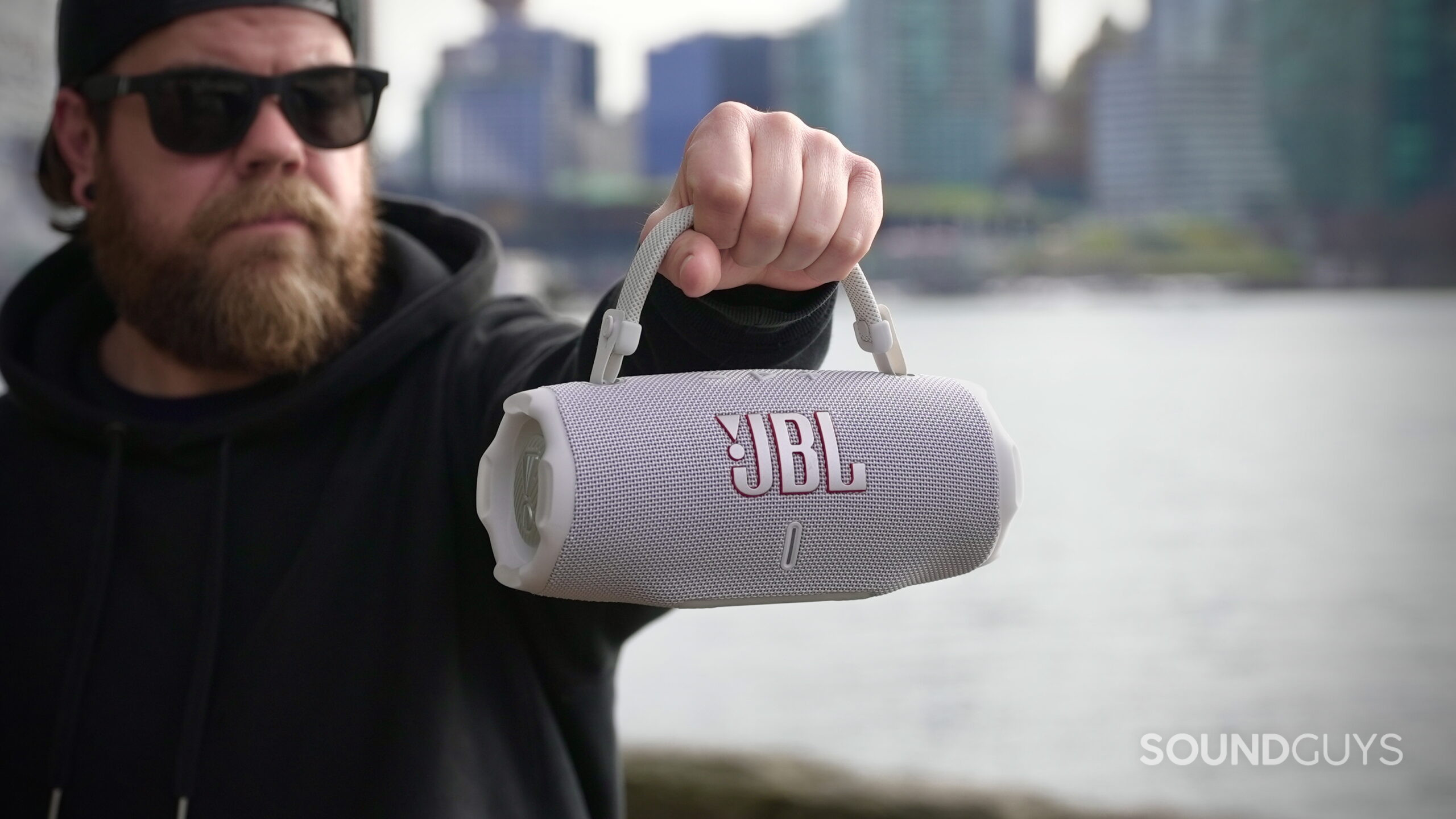
The Charge 6 embraces portability with its cylindrical design, fabric covering, and new detachable handle that can be configured as either a traditional handle or carrying loop. With IP68 water and dust resistance plus drop-proof certification from one meter onto concrete, it’s clearly built for adventures. The speaker has received notable durability upgrades over the Charge 5, including beefier rubber bumpers protecting the passive radiators and a wider, more stable base that prevents it from rolling off surfaces.
In contrast, the HomePod (2nd Generation) is designed as a stationary smart speaker for your home. While it shares a cylindrical shape and fabric covering with the Charge 6, it’s significantly heavier at 2.3kg (5lbs) compared to the Charge 6’s 988g. The HomePod isn’t designed to be moved around frequently, though its small footprint allows for flexible placement on desktops, countertops, or bookshelves.
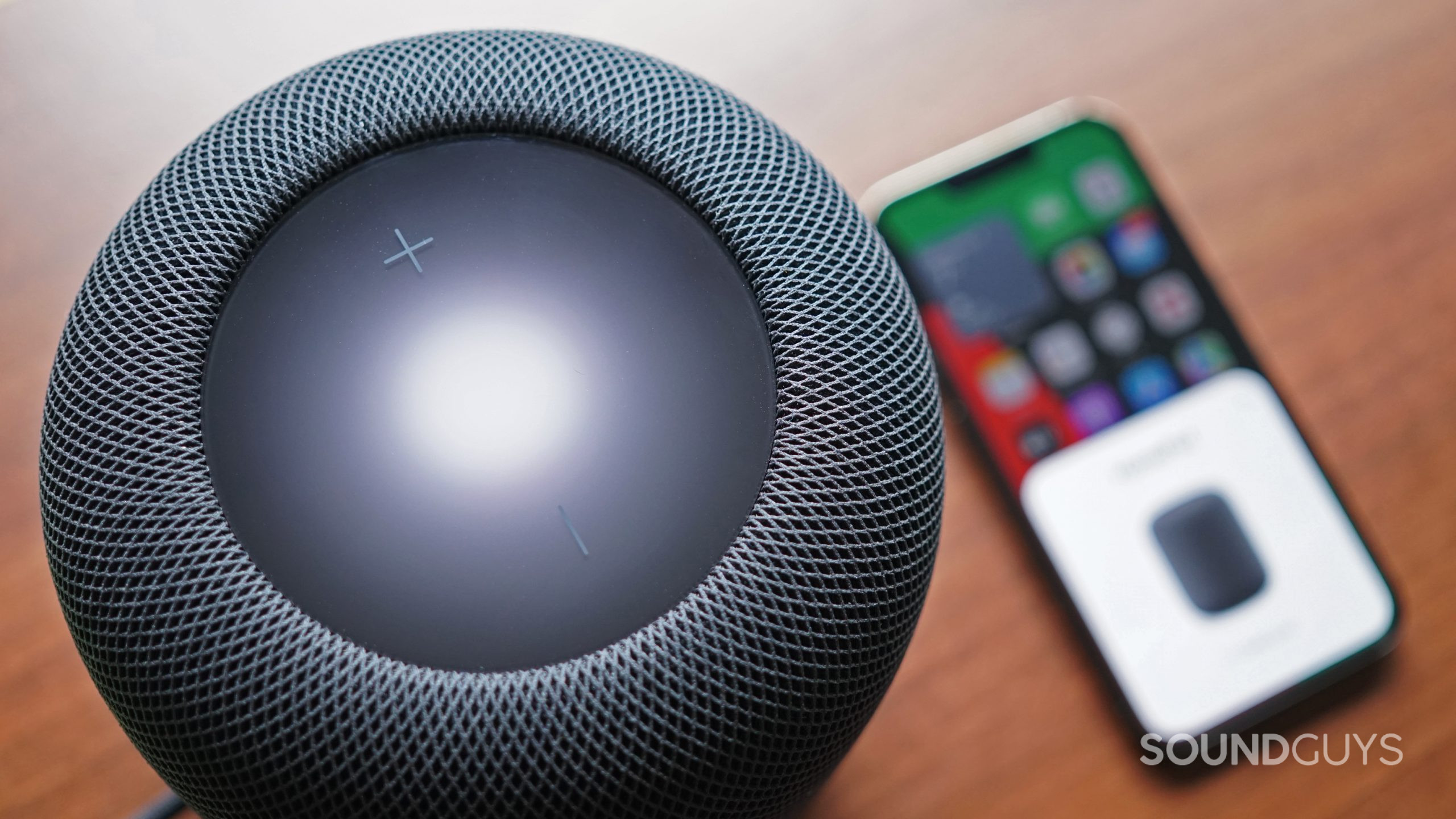
The HomePod shines in its deep integration with Apple’s ecosystem. Setup is seamless with an iPhone—just hold it near the speaker to get started. However, this also highlights its biggest limitation: without an iPhone, you can’t even complete the initial setup. The HomePod is very much a product for those already committed to Apple’s ecosystem.
How do you control the JBL Charge 6 and Apple HomePod (2nd Gen)?
Both speakers offer touch controls, but their implementation and additional control options differ significantly.
JBL Charge 6 controls:
| Action | Power button | Bluetooth button | Auracast button | Play button | Volume + | Volume - |
|---|---|---|---|---|---|---|
| Action 1x press | Power button Turn on device | Bluetooth button Enter pairing mode | Auracast button Pair with other JBL Auracast supported speakers | Play button Play / Pause | Volume + Volume up | Volume - Volume down |
| Action 2x presses | Power button | Bluetooth button | Auracast button | Play button Next track | Volume + | Volume - |
| Action 3x presses | Power button | Bluetooth button | Auracast button | Play button Previous track | Volume + | Volume - |
| Action Press and hold | Power button | Bluetooth button | Auracast button | Play button Enter wired connection mode while inserting USB cable. | Volume + | Volume - |
The Charge 6 has physical buttons on the top of the unit. The control layout has been updated from the Charge 5, with the Party Boost button replaced by an Auracast button that sits alongside the power and Bluetooth buttons on a dedicated, backlit control strip.
The HomePod (2nd Generation) features a touch panel on top that offers simple controls:
- Tap to play/pause
- Touch and hold to activate Siri
- Tap or hold + or – for volume control
However, where the HomePod really shines is voice control through Siri. The speaker has multiple microphones designed to hear voice commands even when music is playing at high volumes. This hands-free operation is central to the HomePod experience, whereas it’s not available on the Charge 6, which lacks a microphone for voice commands or calls.
Should you use the apps of either JBL Charge 6 or Apple HomePod (2nd Gen)?
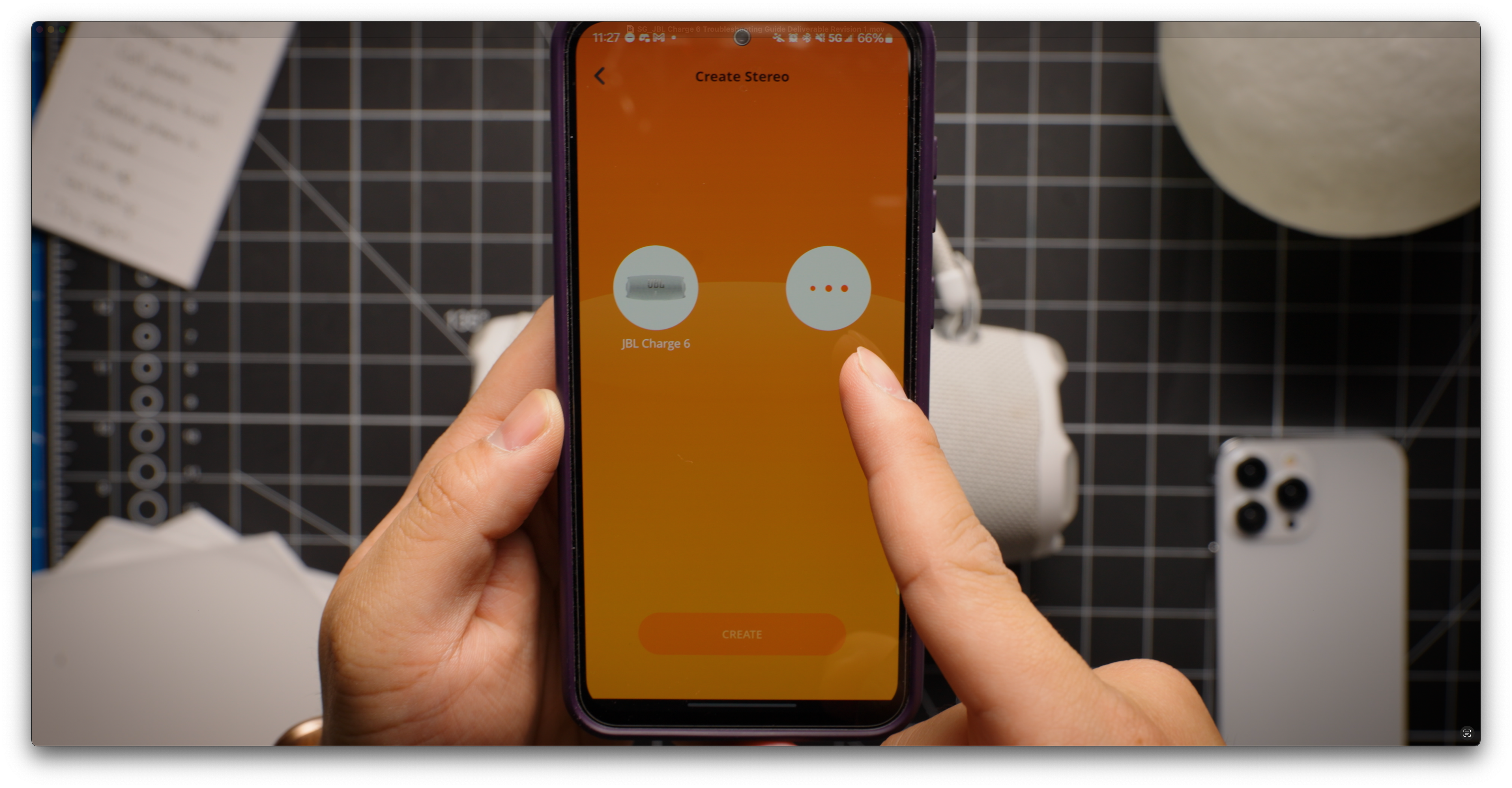
The JBL Portable app unlocks some of the Charge 6’s best features, most notably its new 7-band customizable EQ—a major upgrade from the Charge 5’s 3-band EQ. This allows for much more precise sound tuning to your preferences. The app also provides control over Auracast-linked speakers, enables stereo pairing with another Charge 6, and gives access to the new “Playtime Boost” battery-saving feature (though this comes at the cost of sound quality).
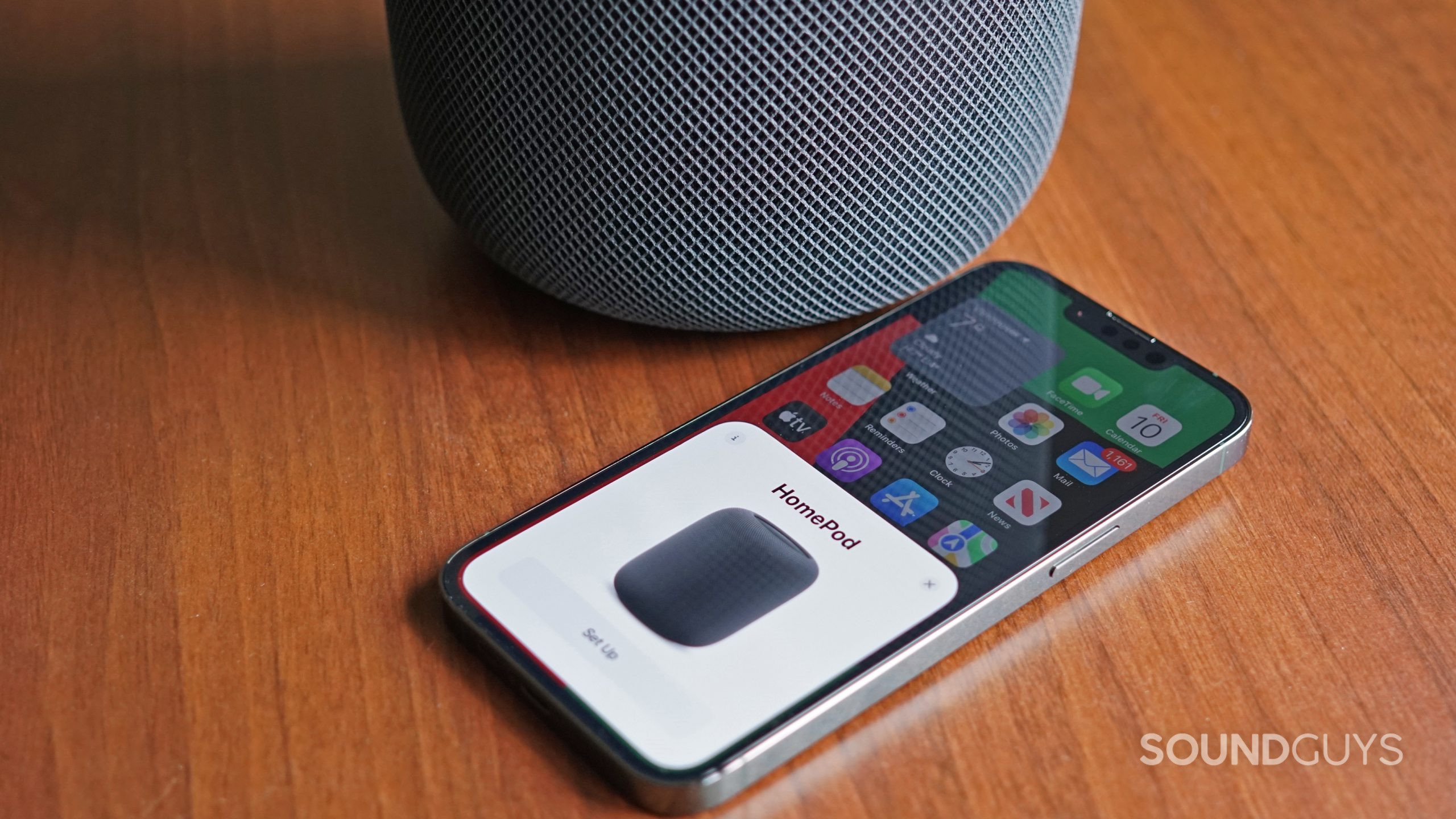
For the HomePod, the Apple Home app is essential for setup and integration with Apple’s smart home ecosystem. While it doesn’t offer the same level of sound customization as JBL’s app, it provides seamless control of your HomePod alongside other Apple HomeKit-compatible devices. The Home app also enables features like intercom functionality between Apple devices and the ability to set up automations involving the HomePod.
If sound customization is important to you, the JBL app offers far more flexibility. However, if smart home integration is your priority, the HomePod’s Home app connection is more robust, assuming you’re already in the Apple ecosystem.
How do the JBL Charge 6 and Apple HomePod (2nd Gen) connect?
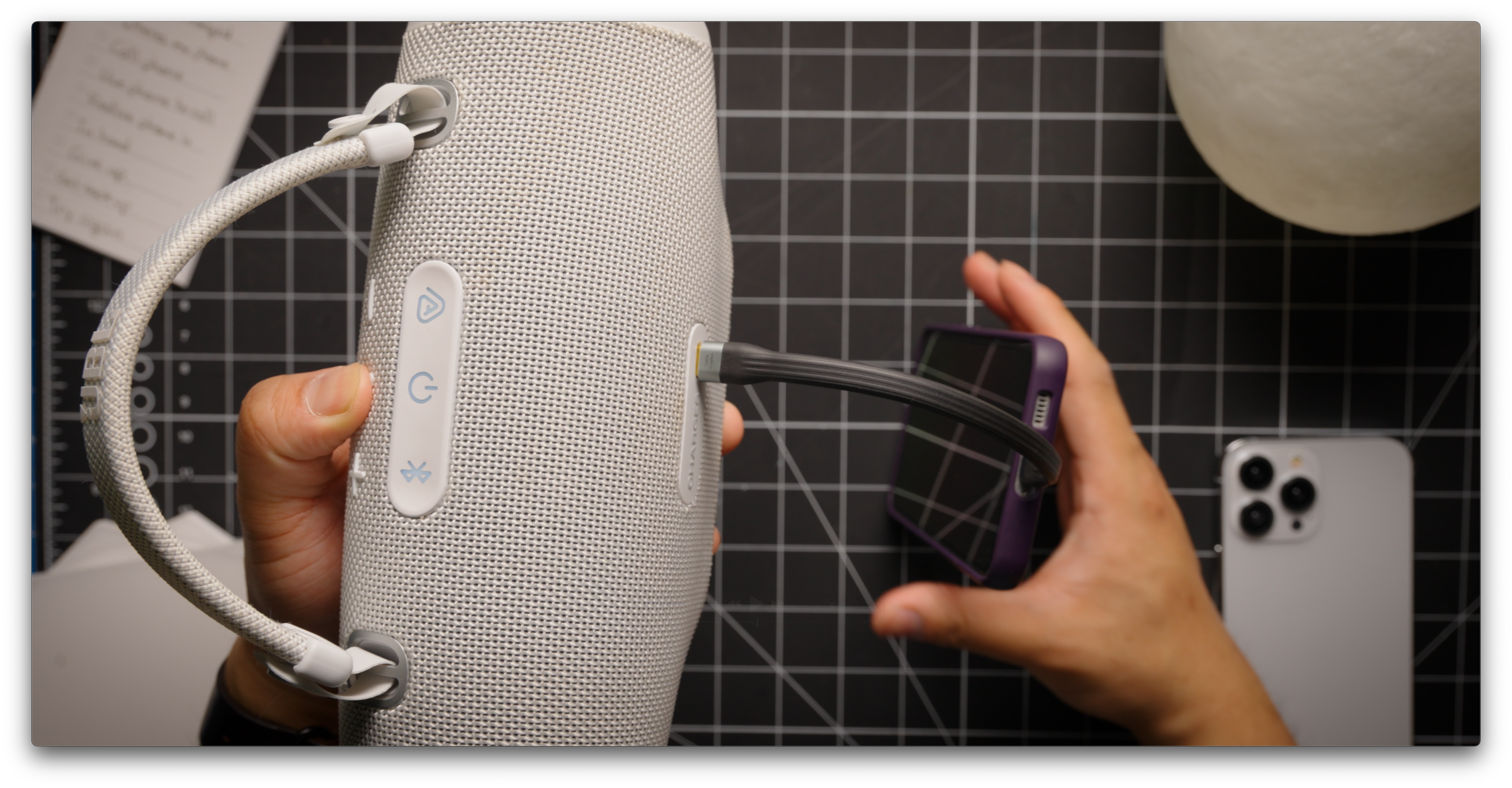
The JBL Charge 6 connects primarily via Bluetooth 5.4, an upgrade from the Charge 5’s Bluetooth 5.1. This provides stable wireless connections to smartphones, tablets, and computers regardless of brand. A significant new addition to the Charge 6 is audio over USB, including support for lossless audio when used with services like Tidal or Apple Music. The USB-C port also serves double duty as a power bank to charge your mobile devices on the go—a signature feature of the Charge series.
The HomePod (2nd Generation) connects through Wi-Fi and primarily relies on Apple’s AirPlay 2 protocol for audio streaming. While it does have Bluetooth 5 capability, it’s not directly accessible for general Bluetooth streaming like the Charge 6. This means you’ll need to use AirPlay from an Apple device or compatible app to play audio. The HomePod also lacks any wired audio inputs.
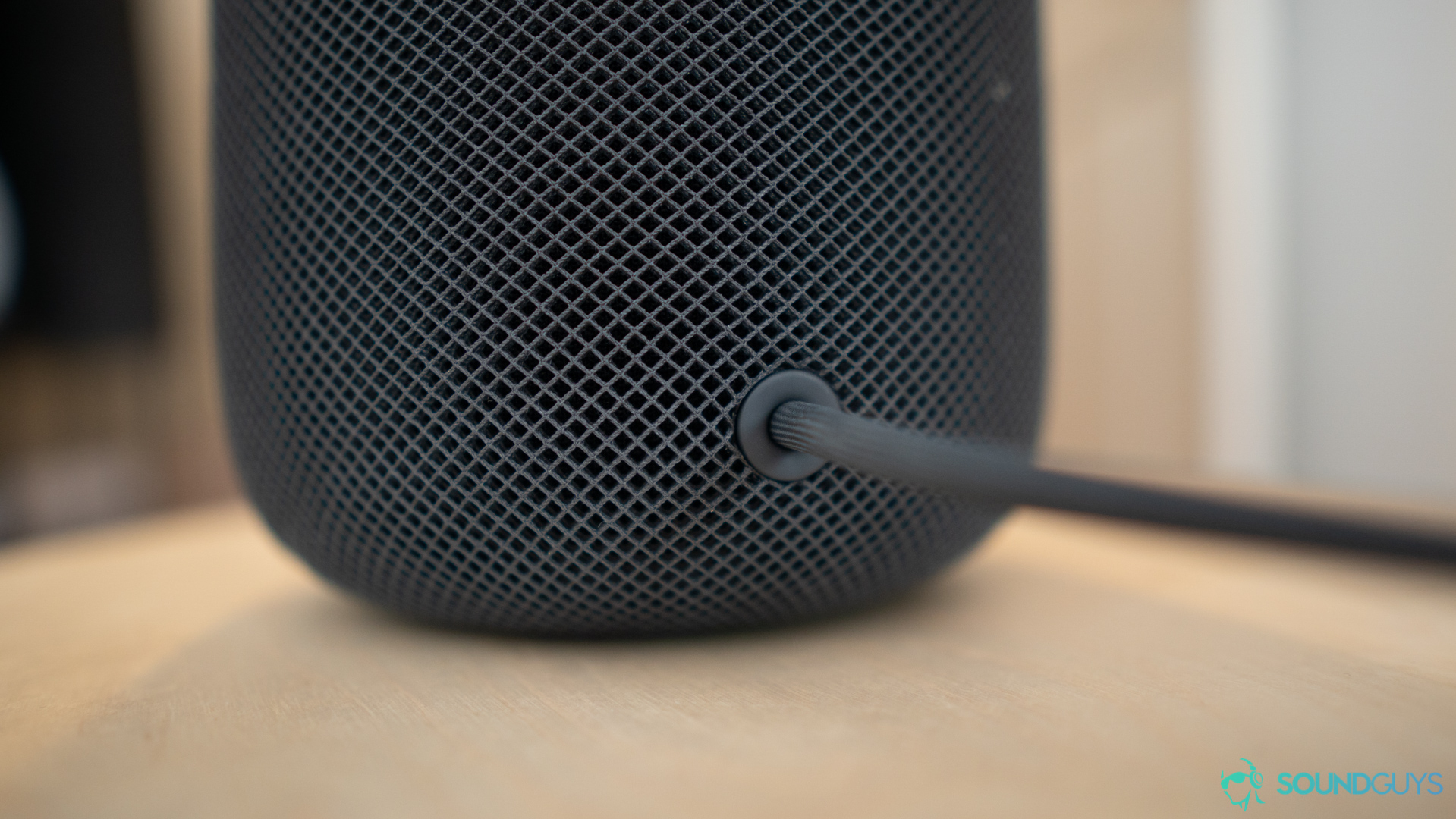
For multi-speaker setups, the Charge 6 uses Auracast to connect with other compatible JBL speakers (though it’s not backwards compatible with older JBL speakers that use Party Boost). The HomePod can pair with another HomePod for stereo sound and can be integrated with other AirPlay 2-compatible speakers throughout your home.
The Charge 6 offers more flexible connection options for cross-platform use, while the HomePod is optimized specifically for Apple’s ecosystem.
Is battery life better on the JBL Charge 6 or Apple HomePod (2nd Gen)?
This comparison is straightforward: the JBL Charge 6 has a battery, and the Apple HomePod (2nd Generation) doesn’t.
The Charge 6 advertises an impressive 28 hours of playback time, though 24 of those hours are under normal operation. The additional 4 hours require activating the “Playtime Boost” feature, which significantly reduces bass response to conserve power. Still, even 24 hours represents a 20% improvement over the Charge 5’s 20-hour battery life. The Charge 6 also features quick charging, with a 10-minute charge providing an additional 150 minutes of playback.
The HomePod (2nd Generation) requires constant connection to a power outlet via its included 1.5-meter power cable. While this limits placement flexibility, it ensures you never have to worry about running out of battery during use.
If portability is important to your use case, the Charge 6 is clearly superior. However, if you plan to use your speaker in a fixed location with reliable power access, the HomePod’s lack of battery becomes a non-issue.
Does the JBL Charge 6 sound better than the Apple HomePod (2nd Gen)?
The JBL Charge 6 features a stronger bass response than its predecessor, which many listeners will appreciate. However, reviewers noted it sounds slightly darker, with some reduced clarity in the high frequencies. Fortunately, the new 7-band EQ allows users to address this by boosting specific frequency ranges to taste.
The HomePod (2nd Generation) contains a high-excursion woofer and five tweeters, creating a more sophisticated acoustic setup. It also features computational audio that adapts sound based on room placement. We found it had a good bass presence and clear reproduction of vocals and instruments.
The HomePod likely has the edge in overall sound quality in a fixed indoor environment, particularly for critical listening. However, the Charge 6’s portability, durability, and customizable EQ make it more versatile for various use cases, especially outdoors.
Special features and modes
The JBL Charge 6’s standout special feature is its “Playtime Boost” mode, which extends battery life by reducing bass response. While this compromises sound quality, it can be helpful in situations where you’re running low on power. The Charge 6 also features Auracast for connecting multiple compatible JBL speakers together and the ability to function as a power bank via its USB-C port.
The Apple HomePod (2nd Generation) focuses on smart features integrated with Apple’s ecosystem. It functions as a HomeKit hub for controlling compatible smart home devices. The computational audio system automatically tunes sound based on room placement, and you can pair two HomePods for stereo sound or use them as TV speakers through an Apple TV. The HomePod also offers always-on Siri voice assistant access for hands-free control.
Should you get the JBL Charge 6 or Apple HomePod (2nd Gen)?
If you’re an on-the-go listener who values versatility, the JBL Charge 6 is your clear winner. At $199, it offers exceptional portability with serious durability, impressive 24-hour battery life, and that handy power bank feature for charging your devices. The new 7-band EQ and improved bass response make it sound better than ever while working seamlessly with any device, regardless of brand.
The Apple HomePod makes sense only if you’re already deep in Apple’s ecosystem and primarily use your speaker at home. While it sounds fantastic and offers slick Siri integration for controlling your smart home, its $299 price tag and complete lack of non-Apple compatibility make it a tough sell for anyone not already sporting an iPhone and Apple TV.
For most people, the JBL Charge 6 simply offers more bang for your buck. It handles both backyard BBQs and beach trips with ease, sounds great (especially after some EQ tweaking), and costs $100 less than the HomePod. Unless you specifically need a stationary smart speaker for your Apple-centric smart home, the Charge 6 is the more practical choice.

Deep Apple integration
Smart home improvements
What should you get instead of the JBL Charge 6 and Apple HomePod (2nd Gen)?
If neither the JBL Charge 6 nor the Apple HomePod (2nd Generation) seems like the perfect fit, there are several alternatives worth considering.
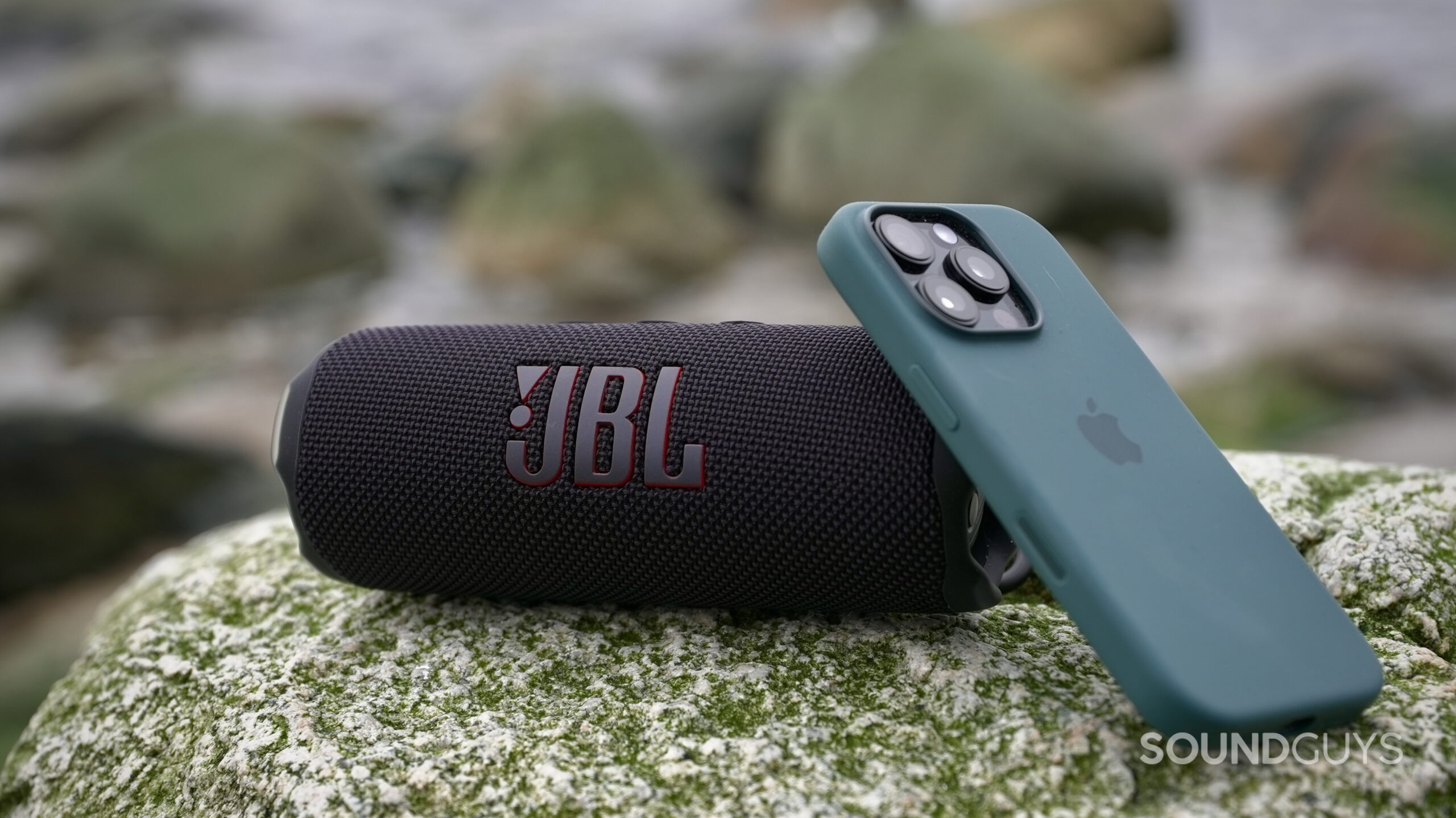
If you like the JBL Charge 6’s portable design but want something different and cheaper, consider:
- JBL Flip 7 ($149 at Amazon): A smaller sibling with many of the same features, including IP68 protection, audio over USB, and carrying options. The main trade-off is battery life, offering only 16 hours compared to the Charge 6’s 28 hours.
- Beats Pill (2024) (on the product's website): Features impressive bass response, IP67 water and dust protection, and an angled upward-firing design. Like the Charge 6, it offers lossless audio over USB-C.
If you’re interested in the HomePod’s smart capabilities but aren’t committed to Apple’s ecosystem, consider:
- Google Nest Audio ($99.99 at Best Buy): A more affordable smart speaker with Google Assistant integration.
- Amazon Echo Dot ($49 at Amazon): An even more budget-friendly option for Alexa-based smart home control.